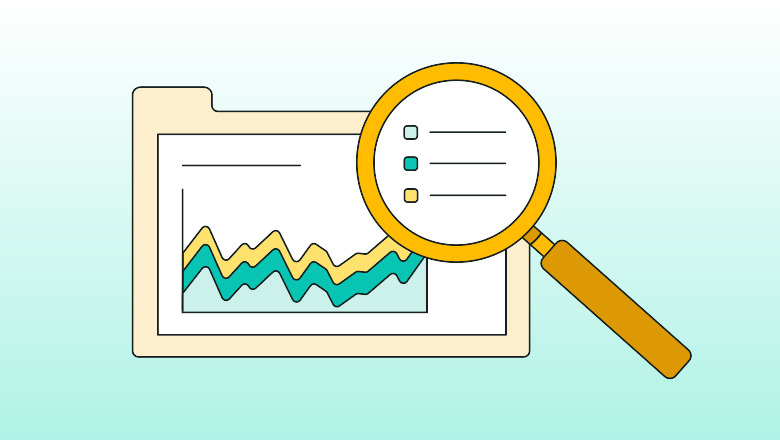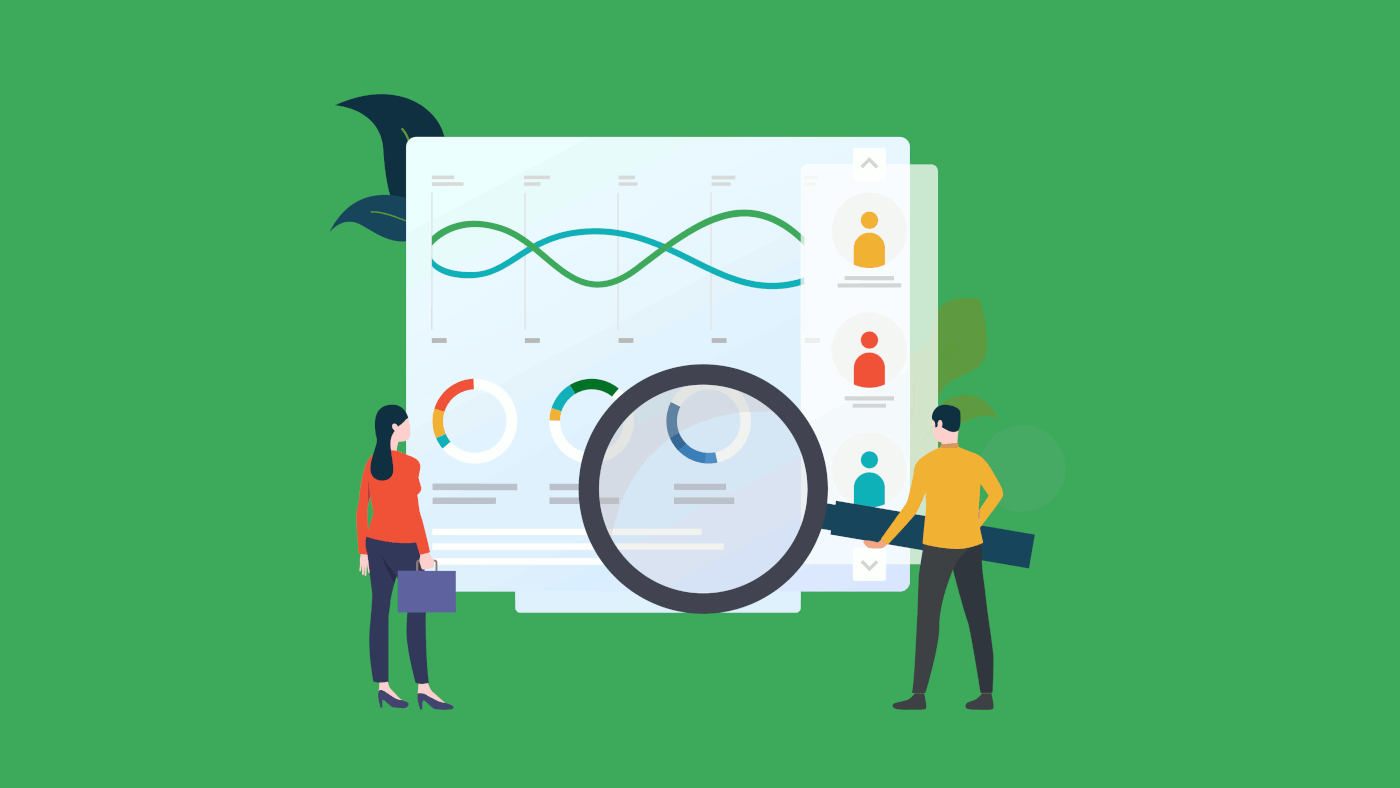
Optimizing B2B Lead Generation: The Power of A/B Testing
September 18, 2023
Cutting Costs and Boosting Sales: The Role of AI Marketing in Retail Inventory Management
September 19, 2023Understanding B2B Lead Generation
In the complex realm of B2B (Business-to-Business) markets, the art of lead generation holds paramount importance. At its core, B2B lead generation is the strategic process of identifying, nurturing, and converting potential business clients or customers into valuable leads. These leads form the foundation upon which prosperous business relationships are built.
The Role of Competitor Analysis
Competitor analysis, often underestimated in the grand scheme of B2B lead generation, serves as the reconnaissance mission before the battle. It involves the meticulous scrutiny of your competitors’ strategies, strengths, and vulnerabilities to gain a decisive competitive advantage. In this comprehensive blog post, we’ll embark on a journey to unearth the profound significance of competitor analysis in the realm of B2B lead generation.
Competitor analysis isn’t just about spying on your rivals; it’s a strategic tool that can transform your lead generation efforts. Now, let’s delve into why competitor analysis is the secret ingredient to B2B lead generation success.

Why Competitor Analysis Matters
Gaining Market Insights
Competitor analysis can be likened to having a crystal ball into the future of your industry. By closely examining your competitors, you can decipher emerging market trends, shifting customer preferences, and the adoption of innovative technologies. This invaluable insight serves as the bedrock upon which you can craft your lead generation strategies.
Understanding the market’s pulse, as revealed through competitor analysis, enables you to position your offerings in a way that resonates with your target audience. For instance, if you discover that a competitor is investing heavily in eco-friendly practices and gaining popularity, you can adapt your messaging and products to align with sustainability, capturing a share of the market drawn to eco-conscious solutions.
Identifying Opportunities and Threats
In the world of B2B, what proves successful for one organization may not necessarily work for another. Competitor analysis acts as a compass, guiding you through uncharted waters. It can unveil golden opportunities specific to your business while highlighting potential threats.
Imagine you’re a software company, and competitor analysis reveals that a rival is struggling to provide adequate customer support. This insight presents an opportunity for you to shine by offering exceptional customer service. By addressing a pain point your competitor is neglecting, you can attract dissatisfied customers and turn them into loyal leads.
Strategic Decision-Making
Picture this scenario: you’re in a boardroom meeting, proposing strategic initiatives with unwavering confidence. You have data-backed insights, thanks to competitor analysis, at your fingertips. This is the power of competitor insights – they empower your decision-making process.
From product development and pricing strategies to marketing campaigns and distribution channels, competitor analysis provides a foundation upon which to make informed choices. For instance, if your analysis reveals that a competitor’s pricing model is outperforming others in the market, you can consider adjusting your pricing strategy to remain competitive.
In essence, competitor analysis isn’t just about acquiring data; it’s about transforming data into actionable intelligence. It’s about identifying trends, seizing opportunities, and steering your ship through the tumultuous waters of B2B lead generation.

Tools and Methods for Competitor Analysis
SEO Analysis
In the digital age, the battlefield for B2B lead generation has shifted to the online realm. Search Engine Optimization (SEO) reigns supreme, and competitor analysis in this domain is critical. Tools like SEMrush and Ahrefs are your trusty companions in this journey. They empower you to dissect your competitors’ SEO strategies, uncover the keywords they’re targeting, and reveal the backlinks propelling them to the top of search engine rankings.
For example, if your analysis unveils that a competitor is consistently ranking high for keywords relevant to your industry, you can craft a content strategy to compete for those keywords. This not only boosts your visibility but also ensures you’re engaging with potential leads who are actively searching for your offerings.
Content Gap Analysis
In the digital age, content is king. However, creating content blindly won’t yield the desired results. This is where content gap analysis comes into play. Tools like BuzzSumo can be your guiding light in this aspect. They help you identify gaps in your competitors’ content strategies.
For instance, if your competitor has comprehensive blog content about industry trends but lacks in-depth how-to guides, you can seize this opportunity. By creating detailed how-to guides and distributing them through various channels, you position yourself as an authority, attracting leads seeking practical solutions.
Social Media Scrutiny
In the age of social media dominance, your competitors’ online presence is a goldmine of insights. Tools like Sprout Social are your spyglasses in this realm. They allow you to track your competitors’ social media activity, engagement metrics, and trending topics they leverage.
Let’s say your competitor’s posts about industry conferences receive substantial engagement. This indicates that your target audience is interested in such events. You can then consider participating in or hosting similar conferences to attract leads interested in your industry.
Customer Reviews and Feedback
Your competitors’ customers are unwitting sources of intelligence. Customer reviews and feedback on platforms like Trustpilot, G2 Crowd, or even social media can offer unparalleled insights. Analyze these reviews to understand what customers love and loathe about your competitors.
For instance, if customers consistently praise your competitor’s user-friendly interface, it suggests that ease of use is a critical factor for leads in your industry. You can then emphasize your own user-friendly design in marketing materials to attract leads who prioritize usability.
By now, you should be beginning to grasp the transformative potential of competitor analysis in B2B lead generation. It’s not just about collecting data; it’s about deciphering the narrative hidden within that data. It’s about uncovering the strategies that drive your competitors’ success and using that knowledge to fuel your own journey to lead generation triumph.

Crafting Your Competitor Analysis Strategy
Setting Clear Objectives
Before diving into the intricacies of competitor analysis, it’s essential to establish clear objectives. What do you aim to achieve through this process? Are you looking to increase lead volume, improve conversion rates, or enhance brand visibility? Having well-defined goals will serve as your North Star, guiding your efforts in the right direction.
For instance, if your primary objective is to boost lead volume, your competitor analysis might focus on identifying the lead generation tactics employed by your rivals that have yielded the highest conversion rates.
Data Collection and Evaluation
Competitor analysis is not a passive activity; it’s a dynamic process that requires both data collection and evaluation. While tools can help you gather data efficiently, the real magic lies in your ability to derive actionable insights from that data.
Consider using tools like Google Analytics to monitor your competitors’ website traffic and visitor behavior. Are they experiencing spikes in traffic after specific content releases or marketing campaigns? Understanding these patterns can inform your content strategy.
Continuous Monitoring and Adaptation
The business landscape is not static, and neither should your competitor analysis be. Markets evolve, competitors adapt, and customer preferences shift. It’s crucial to implement continuous monitoring mechanisms to stay ahead of the curve.
For instance, if you notice a competitor adopting a new social media platform and gaining traction, it might be worth exploring that platform as well. Staying attuned to such developments ensures that your lead generation strategies remain relevant and effective.
Collaboration with Sales and Marketing
For B2B lead generation to be truly effective, your sales and marketing teams must be in sync. Competitor analysis shouldn’t be siloed; it should be a collaborative effort. Regular communication between these departments ensures that the insights derived from competitor analysis are seamlessly integrated into your lead generation strategies.
For instance, if competitor analysis reveals that a particular messaging strategy resonates with your target audience, your marketing team can incorporate similar messaging into their campaigns. Simultaneously, your sales team can align their pitches to emphasize these key points when engaging with leads.

Maximizing B2B Lead Generation with Competitor Insights
Tailoring Your Value Proposition
One of the most potent ways to leverage competitor insights is by crafting a compelling value proposition. Your value proposition should highlight the unique advantages you offer compared to your competitors.
For instance, if competitor analysis reveals that your rivals struggle with timely customer support, emphasize your responsive customer service as a key selling point. This not only attracts leads seeking exceptional support but also positions your brand as a customer-centric solution provider.
Targeted Content Creation
Content creation is at the heart of B2B lead generation, and competitor insights can turbocharge your content strategy. With content gaps identified, create content that addresses your audience’s pain points and questions.
Consider this scenario: competitor analysis unveils that your industry peers have extensive blogs about industry trends, but there’s a dearth of comprehensive how-to guides. This gap signifies an opportunity to create in-depth how-to guides that cater to your audience’s informational needs.
Relationship Building
B2B lead generation is not a numbers game; it’s about nurturing relationships. Competitor insights can guide your relationship-building efforts.
For instance, if competitor analysis shows that your rivals are slow to respond to customer inquiries on social media, you can stand out by being exceptionally responsive. Engaging with leads on a personal level, addressing their concerns promptly, and providing tailored solutions can transform casual inquiries into promising leads.
In essence, competitor analysis isn’t just about data collection; it’s about turning data into actionable strategies that set you apart in the fiercely competitive world of B2B lead generation.
The Ever-Evolving Landscape of B2B Lead Generation
B2B lead generation is a dynamic and ever-evolving process. What works today may not work tomorrow. Competitor analysis equips you with the agility to adapt and thrive in this dynamic landscape.
As you embark on your journey to mastering competitor analysis, remember that it’s not about merely keeping an eye on your rivals; it’s about learning from them, staying ahead, and ultimately, triumphing in the world of B2B lead generation.
In conclusion, competitor analysis is your secret weapon. It’s the key to unlocking insights that fuel your strategies, the compass that guides your decisions, and the pathway to a more successful B2B lead generation journey.
In the following FAQs section, we’ll address some common queries related to competitor analysis and B2B lead generation, providing further clarity on this essential topic.


